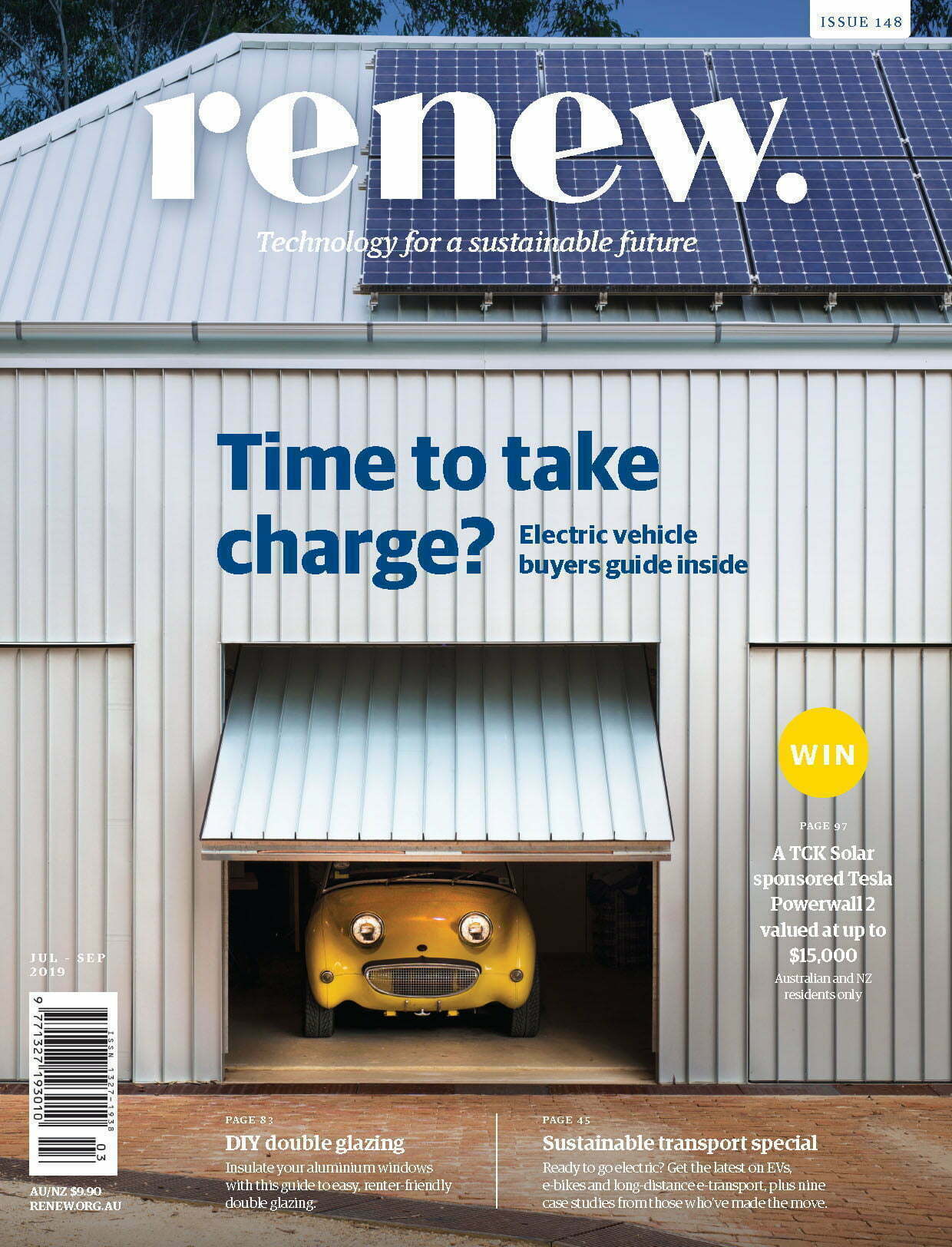Ending the ICE age, An electric vehicle buyers guide
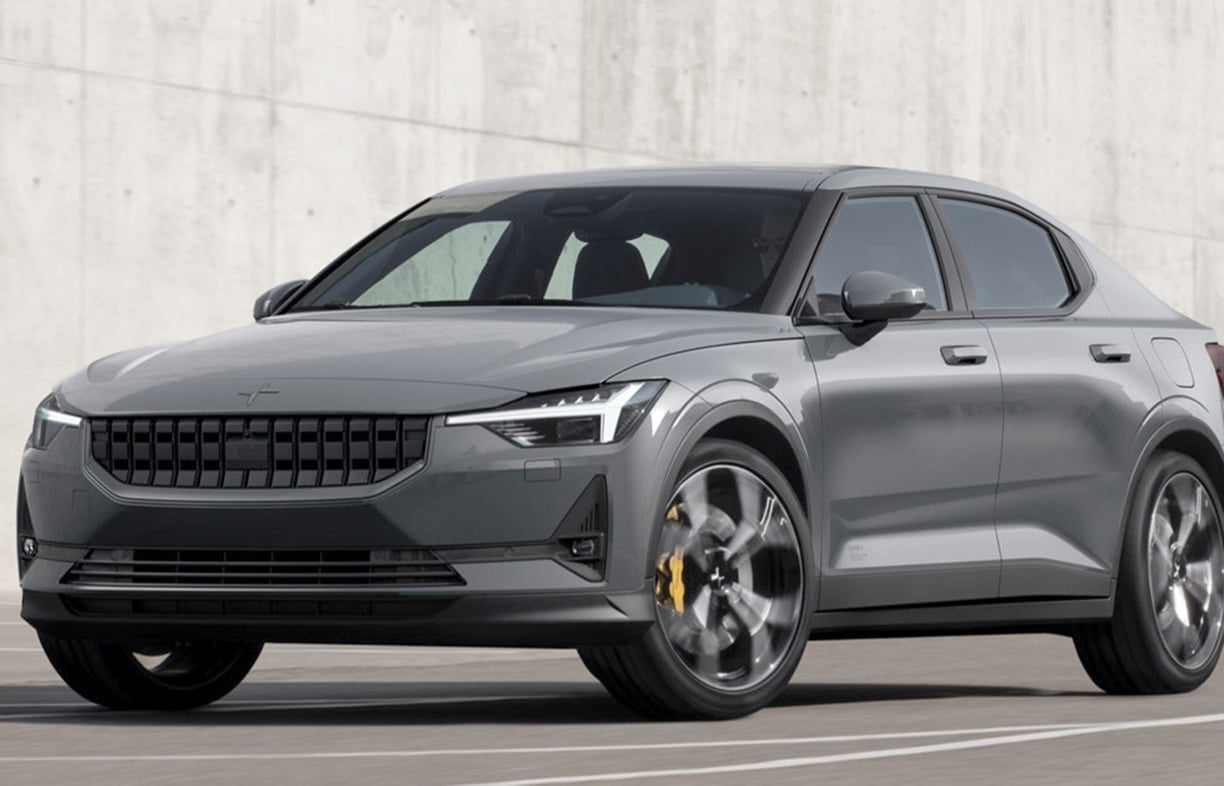
As the world slowly wakes up to the need to electrify personal transport, the range of electric vehicles is starting to ramp up. Lance Turner looks at how Australia is doing in the move away from fossil fuels, and which EVs you can buy now and in the near future.
Cars have evolved over the last 100 years or so, but one thing hasn’t changed much—they are predominantly powered by internal combustion engines (ICE) that burn fossil fuels. While engine technology has improved, you can’t avoid the fact that ICE vehicles emit CO2 and many other pollutants. They are one of the primary sources of greenhouse gases, with total transport emissions being around 18% of Australia’s total emissions. Electric vehicles (EVs) reduce these emissions considerably and have the potential to eliminate them entirely when run on an increasingly renewable electricity grid.
Why EVs
The world is hurtling towards electrification of cars, with many researchers expecting the complete replacement of the world’s private vehicle fleet with EVs in the next 20 to 30 years. Take, for example, Norway. Because of a number of government-backed incentives to buy an EV, more than 50% of all new cars in Norway are now sporting a plug. You could consider the ICE market in Norway to be dead already.
While EV sales in Australia are around 0.2% of new car sales, in other countries it is somewhat higher. At time of writing, in NZ it’s around 1.8%, in the USA it’s around 2.1%, 4.2% in China, and around 2.5% in the UK. And many other European countries are much higher, from 2.6% in Austria to a huge 59% in Norway, the majority ‘pure’ battery EVs (around 44% in Q4 of 2018 were plug-in hybrid EVs, more on these later)—this means Norway has almost 8% of all cars as zero emission vehicles.
Globally, at the end of 2018, the world market share for plug-in vehicles was around 2.2%, and this has only accelerated in 2019. You can check out the world’s progress with EV sales at EV-volumes.com (Australia’s page currently has no data!).
In Australia, EV ownership has been constrained by lack of government support and lack of available models. When it comes to models, 2019 may well be the year that changes, with several new longer range and more affordable models hitting our shores. And when it comes to incentives, we have started to see political discussion on this in the most recent federal election—let’s hope this means more EV encouragement is on the way (see ‘EV buying incentives’ for more).
The primary advantage of a shift to EVs is lower greenhouse gas emissions, urgently needed in the current climate emergency. In almost all cases, EVs produce less greenhouse gas emissions than their ICE counterparts, even when the electricity that powers them is produced from coal—our regular EV writer, Bryce Gaton, analysed this in 2018 for Australia’s electricity grid (bit.ly/RenewUEVE), with only one exception in Victoria (if you buy an EV for all driving but take no other CO2 reduction measures). But even there, using GreenPower or rooftop solar reverses the equation. On top of that, Australia’s grid is getting greener every year, which means EVs are too, while ICE vehicles are approaching the limit of their efficiency already.
But it’s not just about emissions. EVs have lower ‘fuelling’ costs (around a quarter to a half of an equivalent ICE vehicle) and are lower maintenance due to fewer moving parts—which means lower ongoing costs. Plus there’s the ‘EV grin’—they’re just enjoyable to drive, according to many satisfied EV owners, quiet and with excellent acceleration, and they have the added convenience of being able to be charged at home for most trips.
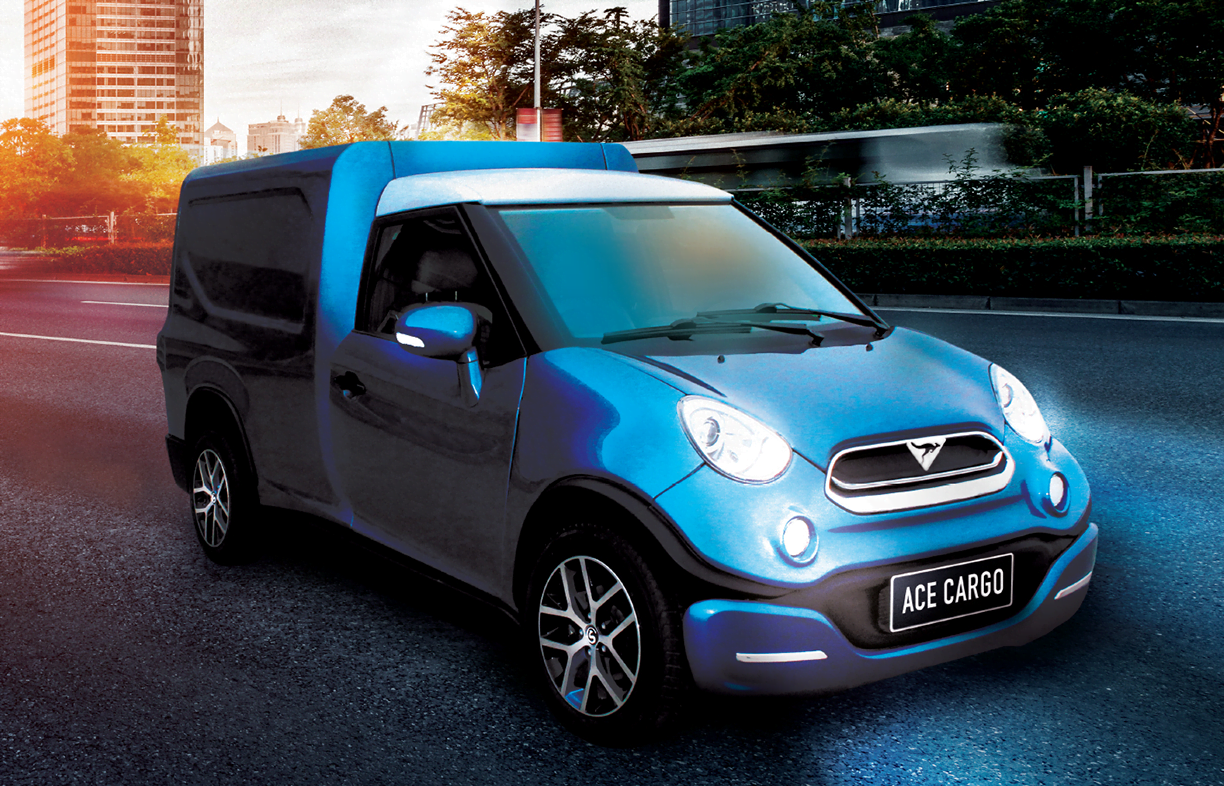
So why don’t we all have an EV already?
There are many reasons why EVs haven’t become mainstream until recently. The primary reason was the lack of travel range that was generally perceived to be necessary. Other factors include the higher purchase price of EVs (mostly due to battery prices, although other factors are at play now, which we discuss later), the lack of public charging infrastructure, the inability of vehicles to fast charge and the lack of EV models available.
With the advent of advanced lithium ion batteries in EVs and the steady building of fast charging infrastructure, most of these issues are evaporating. EVs are now some of the best-performing, lowest-maintenance and most reliable vehicles available, with some offering ranges exceeding 400 km.
The upfront cost of most EVs is still higher than their ICE equivalents, but the total cost of ownership (TCO) is close to parity with ICE vehicles due to the lower cost of the ‘fuel’ (electricity) per kilometre travelled and the lower maintenance requirements. Indeed, Bloomberg New Energy Finance estimates the TCO of some EVs in Australia could match ICE vehicles as early as 2020 (bit.ly/REBNEFEVs). And purchase price parity is expected somewhere between 2022 and 2025—not that far away!
EVs vs PHEVs
Plug-in hybrid electric vehicles (PHEVs) combine a battery-powered electric engine with a petrol or diesel-powered internal combustion engine that can also drive the vehicle or extend the range of the electric system. Most people currently purchase a PHEV so they can travel longer distances than in a pure battery EV (BEV) and use petrol refuelling on these trips. However, both these reasons for purchasing a PHEV are diminishing as BEVs with longer ranges become available and more (and faster) charging stations are installed. As an example, charging at 50 kW (almost any new BEV can manage this) can put in around 200 km of range per hour of charging, and many BEVs can charge at 100 kW or even 150 kW, which can provide you with more than 200 km of range in 20 minutes.
There are some disadvantages with PHEVs to consider. Unlike a BEV which can be powered by renewable electricity, PHEVs invariably use some fossil fuel. PHEVs have quite small batteries, with battery-only range usually somewhere between 30 km and 50 km, so it’s pretty much inevitable that the ICE system will be operating some of the time.
Buying a vehicle with ICE componentry means you also have the high maintenance costs of the ICE drivetrain—it still requires regular oil, coolant and filter changes, and has an exhaust system and all the other high-maintenance components of any ICE vehicle.
Some people aim to use their PHEVs like a BEV, by running it on battery only most of the time. But in this case you are paying for the ICE drivetrain and almost never using it, while still also having to maintain it and lug around its extra weight. And a potential issue is that, when a PHEV is used this way, its batteries undergo many more full charge/discharge cycles for the kilometres driven compared to a BEV. For example, a BEV with a 500 km range will cycle its battery 200 times to do 100,000 km (best-case scenario), and therefore be about 20% through its battery’s lifespan after that. To do that in a PHEV with a 50 km range requires at least 2000 cycles, approaching the expected lifespan of an EV battery.
PHEVs can give you the security of having backup motive power if you run the battery flat, and can allow you to do long-distance travel when needed (albeit mostly on petrol or diesel power), but buying a BEV with suitable range will allow you to do the same thing.
Are hydrogen fuel cells better?
While there is a lot of hype about hydrogen-powered fuel cell electric vehicles (FCEVs), the reality doesn’t live up to the hype. Fuel cell vehicles are a type of EV, with an electric motor and a battery (needed because of the slow response time of fuel cells to changes in power demand, and for peak power demands, although FCEV batteries are smaller than in a BEV). The main difference is in the added fuel cell system, which consists of high-pressure storage tanks for storing hydrogen (the fuel cell’s fuel) and the fuel cell itself, plus ancillary equipment including the control system, pumps and the like.
Like a hybrid, the FCEV has two separate systems, and like a hybrid, it is more complex and requires more maintenance than a BEV. Also, as 95% of all hydrogen currently available comes from fossil fuels, FCEVs are currently fossil-fuel powered. There is a lot of talk about producing hydrogen from renewable energy (generally using electricity for electrolysis of water into hydrogen and oxygen) and then using that in FCEVs, but the efficiency of the hydrogen fuel cell cycle is low; you need three to four times as much electricity as you would if you simply used that electricity in a BEV. For personal transport, fuel cell vehicles don’t make sense, especially given the lack of hydrogen fuelling stations and the large cost of installing them (in the order of $1 m or more per station, compared to $100,000 to $200,000 for an ultra-fast EV charging station).
The only real advantage that FCEVs have over BEVs is the speed of refuelling, but as the newer crop of BEVs come online with ultra-fast charging capability, this is less of an issue. [See our article on p. 16 of Renew 148 for more on hydrogen and its pros and cons for green energy.]
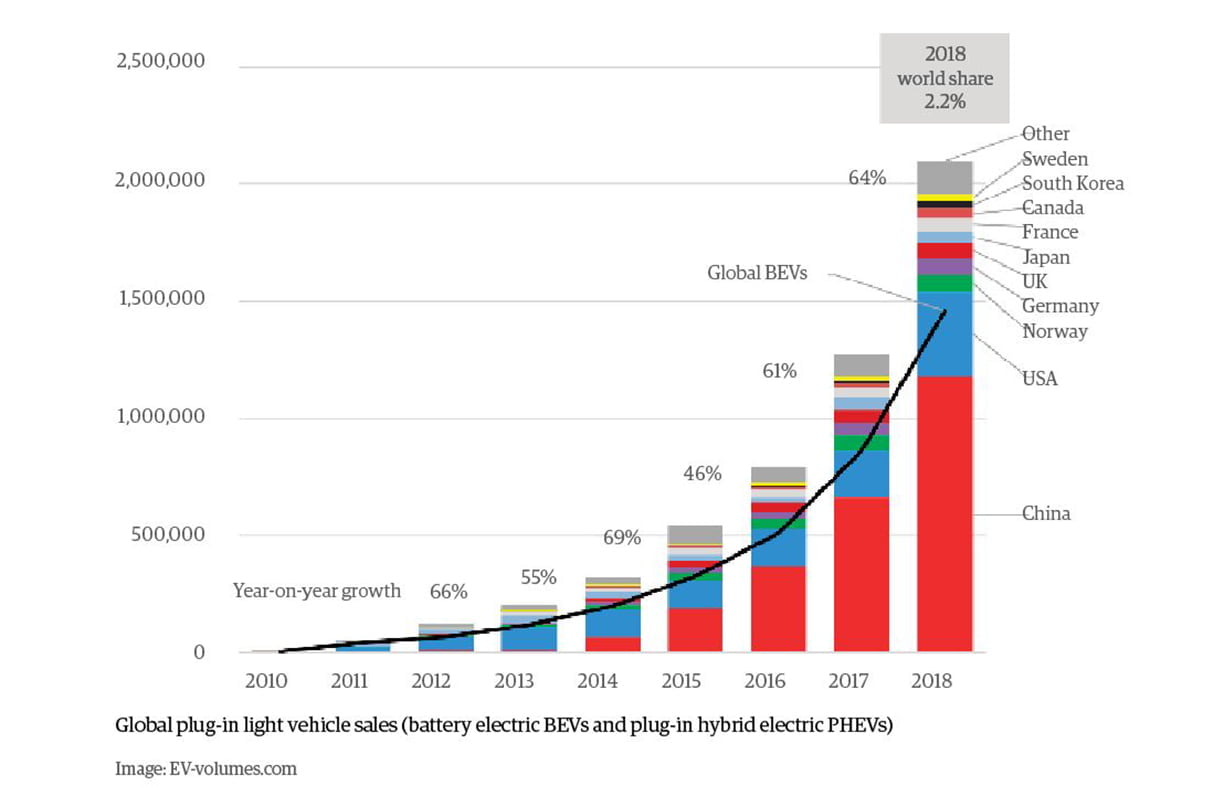
So how does an EV work?
An EV has the same features as any modern car, the primary difference being the source of motive power. In an ICE, fuel is pumped to the engine where it’s sprayed into each cylinder and burnt to push down the piston and turn the crankshaft to power the car via a transmission gearbox. Around 20% of the energy contained in the fuel makes it to the wheels; the rest becomes noise, vibration and heat.
An EV, on the other hand, is rather simpler. You have an electric motor, usually with just one moving part—the rotor—and a battery pack which powers it. Wall-to-wheel efficiency (from energy out of your power plug to energy used to push the car) is usually over 60% for a good quality EV; overall efficiency depends where the energy is generated, as it could be from remote power stations or from your own locally generated solar.
Battery pack
The energy to power an EV is stored in the battery pack. In most EVs, this is located in the floor. Because the battery is heavy, this lowers the centre of gravity of the vehicle, giving a bonus side effect of making EVs more road-stable than their petrol equivalents.
All modern road-going EVs use lithium chemistry batteries for maximum range and durability. The battery consists of a number (often into the hundreds or even thousands) of individual cells, connected to provide a particular voltage and current capacity required for the vehicle. The battery will include safety features like physical barriers between rows of cells, electrical safeties such as fuses between groups of cells (in the case of physical damage to the battery, the fuses will blow, turning the large battery into a bunch of smaller, lower voltage ones), a battery management system to provide safe charging and discharging of each cell in the pack and, for better-designed EVs, an active thermal management system to keep the cells within their safe operating temperature ranges.
Active thermal management (which may be as simple as forced air cooling using fans or a full liquid coolant system) allows the EV battery to be worked harder, such as for long-distance travel where fast charging is required at each recharge stop. Passive cooling is not enough to keep a battery cool during DC fast charging, especially in warmer weather, and can result in the battery becoming too hot to maintain fast charging rates, meaning the charger throttles back the charge rate, greatly extending charging time.
Fortunately, all of this battery control gear is contained either in the battery casing or as a separate module and generally requires no maintenance for the life of the car. The only exception is in the case of liquid-cooled batteries, which may require a scheduled check of the cooling fluid.
The battery will have a rated capacity in kilowatt-hours, and this, combined with the aerodynamics of the vehicle, terrain travelled and driver behaviour, will determine the range of the vehicle on a full charge.
Older EVs had battery packs as small as 12 kWh, but nowadays, 60 kWh or more is common, with packs ranging up to 100 kWh for larger vehicles like the Tesla Model S and Model X. Rated ranges of 400 km or greater are typical of vehicles with batteries that size. Indeed, of the 10 BEVs listed in Table 1, five have rated ranges over 400 km.
Motors
Virtually all current EVs use an AC motor of one form or another. A computerised multi-phase inverter takes the DC from the batteries and converts it to AC for the motor.
Most EV motors spin rather quickly, and so require a simple transmission, usually just a single fixed gear ratio to reduce the rotational speed to something more suitable to drive the wheels. The transmission will often drive the wheels directly via separate driveshafts for each wheel. Some EVs have more than one motor, providing motive power for both front and rear wheels—effectively providing all-wheel drive.


Because electric motors are so much smaller for their power output than internal combustion engines, they can be located directly above the axles. Not all manufacturers do this, instead using EV layouts that are similar to their ICE layouts, with motor and controller under the bonnet and battery under the floor towards the rear. For cars designed to be EVs from the ground up, such as the Tesla vehicles, you will instead find that the motors are in a better position inline with the axles, the battery is under the floor, and the electronics are hidden to not take up usable space. This is why Teslas can fit a front trunk (albeit a fairly small one) as well as a rear one, and none of the electronics or drive system is visible to the owner—a sign of good design!
Charging systems
EVs all have an AC charging socket, which may be located on the side, front or rear of the vehicle—positioning of the charging socket varies widely. This socket allows them to be plugged into a dedicated EV charge station (known as an EVSE, or EV supply equipment, the technical name for an electrical outlet specifically designed for charging an EV), whether it be a Mode 3 (called Level 2 in the US) charger for home use or a faster version Mode 3 for when you are out and about. The EV itself has an in-built charger that takes the AC power from the EVSE and converts it to DC to charge the battery pack.
Many EVs also have an additional socket for DC fast charging (Mode 4, also called Level 3 charging). For DC fast charging, the internal AC charger is bypassed and the DC charge current is fed directly into the battery—but charging is still controlled to prevent battery damage and to end charging when the battery is full.
Until recently, Australia used two different AC standard EV plugs, but the Type 2 or Mennekes plug has now been effectively adopted as the default AC standard (both here, as well as in most other markets). There are also two different DC fast charging standards (CCS2 and CHAdeMO). You can generally use an EVSE with either AC socket if you have the correct adaptor lead. EVSE suppliers such as evolutionaustralia.com.au and jetcharge.com.au supply AC adaptor leads, and many EV owners will have an adaptor or two in the boot, just in case the charging station they are trying to use has a different connector.
DC fast charging adaptors are not available. This is being addressed by EVSE manufacturers by providing both types of DC charging lead on the one charge station; this is only in the early stages of implementation, so you will need to seek out a charge station with the appropriate DC cable if you plan to DC fast charge.
Also of importance is a portable charging lead (also called a portable charger) in case you end up with a low battery and no access to an EVSE. The portable system consists of a lead with the correct plug for your EV, a small current limited in-line EVSE and a plug at the other end to fit a standard power point. You can choose a 10 A, 15 A or even a three-phase plug at the wall end.
This all sounds rather messy, and indeed it is, but as more EVs come online in Australia we hope to see a standardisation of chargers across the country, with more charging stations providing more than one type of outlet, like they do in the USA. If using the car for mostly short trips, simply plugging in when you get back home will almost always meet your charging needs. Only a long trip will require charging away from home (we will look at the issue of homes with no option for charging later in the article).
EV car specs
So we have convinced you that your next car should be an EV, but what specifications and features should you look for? Many specifications are similar to ICE vehicles, such as dimensions, weight, carrying and towing capacity, luggage volume etc, but some specifications are specific only to EVs.
Range, battery capacity and efficiency
We have talked about range, but what does that mean? When stating range, it generally means how far the car will travel on a full battery charge. Just like an ICE vehicle, many factors affect range, including driving style, speed of travel (faster means more energy used per kilometre), terrain, ambient temperature (cold batteries can have less capacity), whether you use air conditioning or heating (EVs don’t have waste heat from an engine; they heat you with a dedicated heater in the cabin) and driving mode (many EVs have two or more modes, such as Eco and Sport).
To give you an idea of how far you can realistically expect to travel, manufacturers give each vehicle a rated range. There are several methods used to rate range, some close to realistic, others not. Light vehicles (including passenger vehicles like cars and light vans) are rated using the Worldwide Harmonised Light Vehicle Test Procedure (WLTP). This is used for all vehicles, not just EVs, and gives a more realistic rating than the older NEDC (New European Driving Cycle) system, which gave unrealistically long ranges. When comparing EVs, make sure you compare apples with apples, and use the same range rating system.
InsideEVs did some calculations and found that to convert from NEDC to WLPT, you can divide the NEDC range by around 1.28 to get the WLPT range. To convert from US EPA range (considered to be the best range estimate of the three systems, but only available for cars sold in the USA) to WLPT, multiply the EPA range by 1.12 (see bit.ly/IEVs_RC).
What range you choose will depend on your needs. For example, if you are a city dweller who rarely ventures out of the big smoke, then almost any EV will have enough range for your uses. If you regularly need to travel long distances, then you may need an EV with greater range and fast charging capability.
The specification that most greatly affects range is, of course, the battery capacity. This is given as the energy stored, i.e. kilowatt-hours. Short-range EVs generally have batteries below 40 kWh while longer-range EVs can have batteries up to 100 kWh. In general, the larger the battery capacity, the longer the range, although there can be considerable variations, even for vehicles of similar size and mass—for example, a Tesla Model X will travel 15% to 20% further per watt-hour than a Jaguar iPace, despite the Tesla being a heavier vehicle.
An important and related figure is the energy use per kilometre. This may be given in watt-hours, such as 150 watt-hours per kilometre (Wh/km, or its equivalent 15 kWh/100 km), or as the inverse, such as 6 km/kWh. These numbers can give you an idea of how efficient the vehicle is and make it apparent that some EVs are more efficient than others.
Busting EV myths
Myth—EVs use electricity from coal-fired power stations, so they are dirtier than ICE vehicles: In almost all cases this is incorrect. Even with coal-fired power in the mix, EVs are cleaner than ICEs in all states and territories, except for some cases in Victoria, which still has brown coal. This issue was addressed in the article ‘Understanding EV emissions’ in Renew 143.
Myth—EVs don’t have enough range: This was true in some cases 10 or so years ago, when EVs were using old battery technology like lead-acid and NiMH, but modern EVs all use lithium batteries, with much higher capacity for their weight. This has given rise to EVs with ranges up to almost 600 kilometres (Tesla Model S) and the ability to charge rapidly. Such EVs can be used not only for short-range trips, but long-distance trips as well, although they will cost more than a shorter-range EV. However, consider the range you need: most people overestimate the distances they need to travel in a day—most trips are under 30 km, and the majority of cars in Australia are city cars and rarely travel further than the range of even the shortest range modern EV.
Myth—EVs are not capable of towing: Towing requires good levels of power and torque, something most EVs have plenty of. In fact, most EVs have more of both than their ICE equivalents, although, just as with ICE cars, towing requires more energy and will reduce the EV’s range. To date, the biggest problem has been that EVs haven’t been available with a tow bar option, but this is changing as manufacturers realise there is a demand for EVs with towing capabilities. For a great example of how EVs are suitable for towing, see the case study on p. 60 of Renew 148.
Myth—Battery production is worse than ICE emissions: Embodied energy payback applies to all the equipment we buy and of course applies to ICE cars as well as EVs. How long the payback is for either will depend on the generation mix in the country of production and the country where the car is used. In an EV, you’re replacing a small lead-acid battery and many ICE engine components with a larger lithium ion battery and a small electric motor. According to a Bloomberg study (bloom.bg/30pBL2Q), an EV manufactured and used in a coal-intensive country like Germany would take around 10 years to break even with an efficient ICE regarding total greenhouse emissions from manufacture and operation over that period. In countries with lower CO2 intensive generation, such as Norway, which is mostly hydro powered, the payback is much shorter. However, other studies show that even in coal-dominant Poland, an electric car would emit 25% less CO2 than a diesel car, according to Transport & Environment Brussels. Further, things have been moving rapidly in the EV battery world, with most manufacturers improving the manufacturing efficiency and reducing associated emissions by improving battery design, such as by reducing the amount of energy-intensive materials like cobalt. Battery manufacturers such as NorthVolt AB are also looking to make their batteries in countries with high levels of renewable energy, such as Sweden.As the global grid moves to renewables, the emissions associated with EV manufacture will steadily decline—something not possible with fossil fuel powered ICE vehicles.
Power, torque, acceleration etc
Like ICE vehicles, EVs have performance figures such as acceleration to 100 km/h and top speed, and motor ratings providing information on maximum power (in kilowatts) and torque (in newton-metres—the rotational equivalent of linear force, or the twisting force around an axis).
What you may notice when looking at EV motor specs is that, while power ratings are often similar or a little higher than the equivalent ICE vehicle, torque ratings are often much higher. This is because torque is basically power/RPM, but unlike ICEs which must rev hard to reach maximum power, electric motors can produce maximum power, and hence maximum torque, at zero RPM.
This can result in some wild torque figures and far greater performance than from an ICE-powered counterpart. Indeed, the fastest accelerating volume production car available is the performance version of the Tesla Model S with ‘Ludicrous’ mode, which can reach 100 km/h from standing in 2.6 seconds—quicker than almost every other vehicle currently available (there are one or two million-dollar supercars that are slightly quicker)—and this is a 2+ tonne, five-seat luxury sedan, not some two-seat hypercar. Such is the performance of electric motors. Of course, most people will never need such performance, but it can make passing manoeuvres extremely rapid and therefore safer—a boon if you do a lot of country driving and regularly get stuck behind slow-moving vehicles.
The other interesting thing about driving an EV is the responsiveness of the motor. Unlike an ICE vehicle which takes time to respond to throttle changes because the transmission will often take a second or so to drop back a gear, and the engine can take a second to respond to throttle changes—a BEV has no such delays. Changes in throttle are instantly delivered by the motor, so the car is much more responsive. Because of their usually copious quantities of available torque, EVs are usually great at climbing hills too.
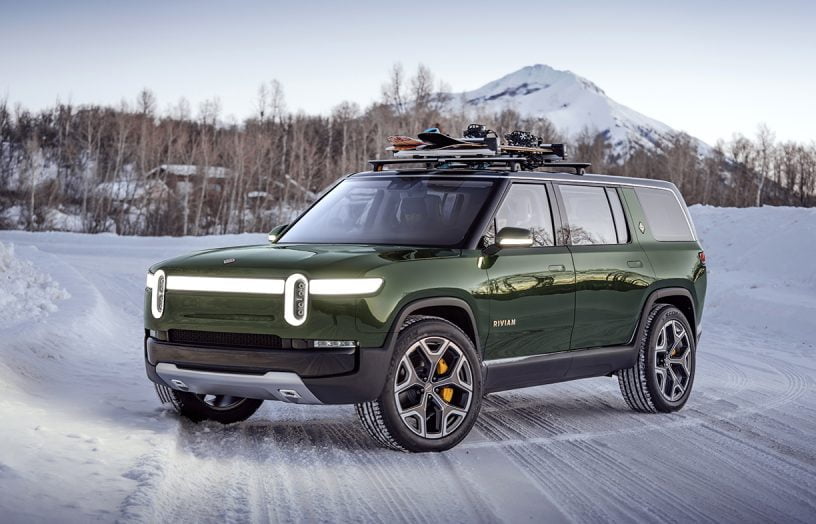

Charge rate capabilities
EVs can charge from two sources—AC power and DC power. When you charge at home using a standard wall plug plus portable EVSE or an installed EVSE, you are charging using AC power. The car draws AC current and converts it to DC for the batteries using its on-board charger.
AC charging rates vary, both in the EVSE and the car’s ability to accept power. Some cars are quite limited—for example, you may be plugged into a 22 kW three-phase EVSE but your car may charge at a slower rate, depending on its on-board charger. So the car’s maximum AC charging rate is a spec to consider.
If you are planning on using your EV for long trips, or indeed regularly charging away from home, then you may need an EV with DC fast charging capability. For example, an EV with a 60 kWh battery that can charge at 50 kW (a common rate nowadays) will take around an hour to recharge to 80%. A similar vehicle with 100 kW or an even higher recharge rate can be ready to go in half that time or less. If you can get a vehicle with a DC fast charging option and it is still within your budget, then it’s a worthy consideration.
CCS DC fast charging rates are steadily increasing, both for the charge station and the cars themselves (note that CHAdeMO is limited to a maximum of 50 kW charging). You can only charge as fast as the rate of either allows—a car with 100 kW capability on a 150 kW charger will only charge at 100 kW, and a car with 150 kW capability on a 100 kW charger will also only charge at 100 kW.
Note that while the maximum charge rate specification for an EV is usually fixed when manufactured, sometimes this is a limit imposed in software rather than the car’s hardware. An example is the Tesla Model 3. A recent over-the-air update pushed the maximum DC fast charge rate from 150 kW to 250 kW to allow the cars to charge from Tesla’s new V3 Superchargers at the maximum 250 kW rate (only Tesla vehicles can use Tesla Superchargers). So far, only Tesla is improving charge performance using software updates, although we expect other manufacturers will catch on soon enough.
It should also be noted that manufacturers can change specifications on a particular model, improving charging performance without launching a new model or model version. An example of this was the Chevy Volt, where GM provided the option of an upgraded 7.2 kW on-board charger over the standard 3.6 kW charger.
Charging sockets, adaptors etc
There are a number of different charging sockets in use for EVs, and while you shouldn’t let the use of one socket over another change your decision about buying a particular EV (adaptors are readily available, as mentioned earlier), you just need to be aware of the socket your EV will use and purchase any adaptors you might need in the future. There’s no point getting to a charging station and finding you don’t have the right adaptor!
Prior to 2018, the standard plug for AC charging in Australia was the J1772 (also called Type 1), but the Mennekes (also called Type 2) is now the standard. However, there are plenty of Type 1 charge stations around, so at the very least you should have a Type 1 to Type 2 adaptor.
For DC fast charging there is CHAdeMO and the newer CCS (combined charging system, which has both AC and DC charging in the one plug). This is only applicable if your proposed EV has DC fast charging capability.
However, only the Nissan Leaf uses CHAdeMO; all other DC charging capable vehicles in Australia use CCS. This means that, by weight of numbers, CHAdeMO DC chargers in Australia are going to be less common than CCS ones. Choosing a CHAdeMO equipped car may be a problem in a few years regarding availability of CHAdeMO DC fast chargers.
Regenerative braking
This refers to the ability of the vehicle to use the motor as a generator when slowing down or travelling downhill. This allows you to recover some of the car’s momentum as energy to recharge the batteries a little. The energy recovered from the vehicle’s momentum can vary greatly, from as low as 16% to up to 70%, depending on driving style, motor efficiency etc (‘Analysis of the Regenerative Braking Efficiency of a Latest Electric Vehicle’, Alberto Boretti, RMIT, 2013). All modern EVs have regenerative braking (often called regen), but the level of regen available can vary. Some cars have it fixed in each mode, while others let you select the level, which determines how aggressive the braking effect is—from a gentle slowing as you coast, to a strong braking effect.
Some cars have regen braking designed to let you drive in ‘one-pedal mode’, without using the brake pedal (except for very rapid braking); the regen braking combined with electronically controlled regular friction brakes can bring the car to a complete halt. This is ideal for stop-start traffic but takes a little getting used to. In general, the vehicle’s regen braking and conventional braking systems will be combined by the car’s electronic systems to provide a braking effect similar to an ICE vehicle.
Connectivity and over-the-air updates
Most modern cars have some level of connectivity, whether it just be for syncing your phone to the sound system or GPS for in-built navigation systems. Some EV manufacturers have taken connectivity to an entirely different level, the most well-known being Tesla.
Unlike most other vehicles, even most other EVs, Teslas regularly connect to Tesla’s servers to check for software updates. These updates are downloaded and installed while the car is inactive (such as when being charged, although charging is temporarily suspended while the actual update happens), often adding new features that weren’t there the day before! Tesla has taken this even further, improving performance of their vehicles with a simple update; when the Model 3 came out and its brakes were not performing as well as expected, Tesla fixed it with an over-the-air (OTA) update.
Sadly, not many other manufacturers have followed this path, but seemingly for good reason—in most countries, cars are certified with a particular level of performance of all systems. Updates change those specifications, potentially making the car no longer meet its certification. Sure, it may perform better, but it technically still needs to be re-certified.
The USA has a simple certification system, which is more flexible than in other countries. So how does Tesla get around this issue in most countries? The complexities of this issue are too involved to go into here, but there is an interesting article on this at bit.ly/2VDRBrK.
However, when an update improves performance of safety systems, certification systems based on old technology (which is, let’s face it, what most countries have based their systems on) can actually hamper safety improvements. It’s time for the world’s legislators to catch up with the 21st century and adapt their certification systems to allow OTA updates.
What this means though is that most EVs won’t have OTA updates any time soon, at least in Australia, but if you like having new features and functionality pop up on your car on a regular basis, then, for the moment, a Tesla is going to be your only choice.
Autonomous driving features
There has been much discussion in the media and in technical circles regarding vehicle autonomy—the ability of cars to control at least some of the driving themselves. Autonomy has been graded into six levels (Level 0 to Level 5), with Level 0 being no autonomy at all and Level 5 being full autonomy, where a car can travel on its own from any location to any other, while doing so safely and obeying all road rules.
Most manufacturers are considered to be at Level 2, with vehicles being able to do some things, such as stay in their lane, brake automatically in an emergency, or even change lanes when directed by the driver. There are currently no Level 3, 4 or 5 vehicles available to consumers and regulations in Australia don’t allow these as yet; although Tesla’s Elon Musk states that their cars will be Level 5 autonomous in the near future.
For most users, vehicle autonomy certainly isn’t something to prioritise over other features at this stage.
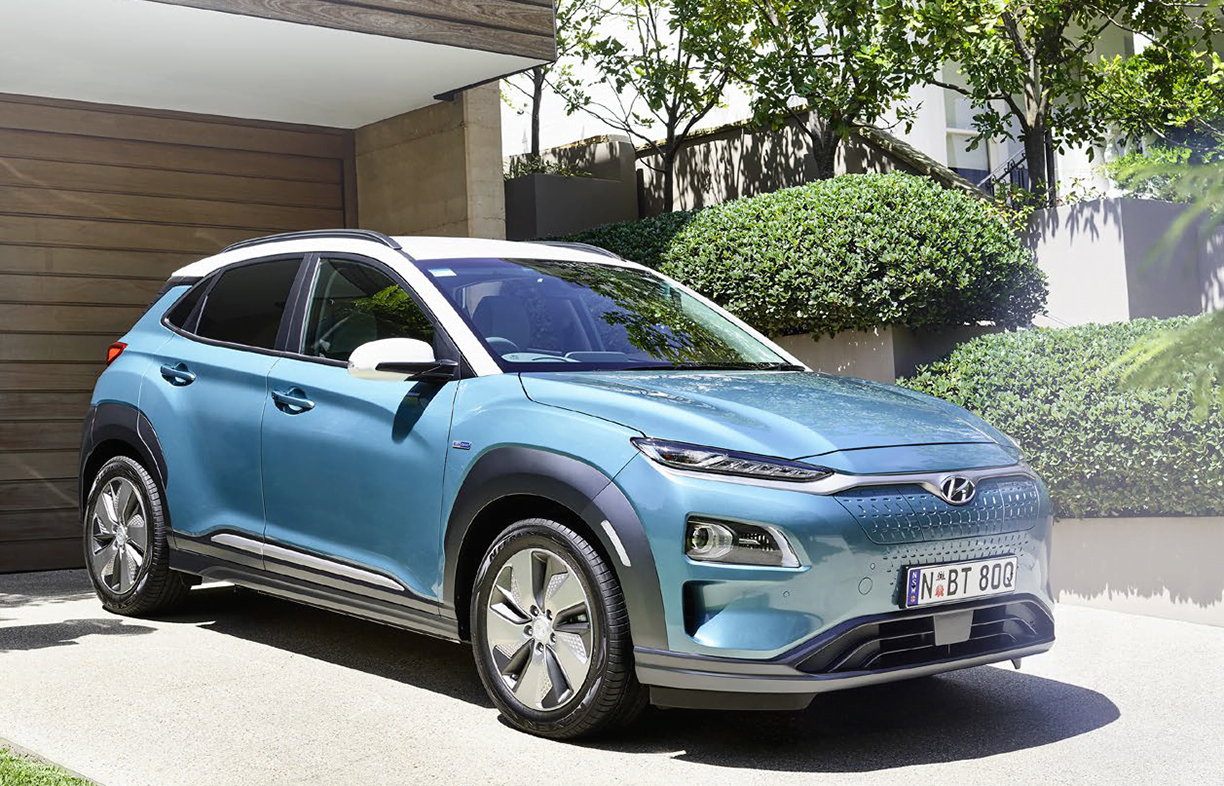
How much does an EV cost?
As with any new technology that hasn’t yet become mainstream, EVs are considerably more expensive to purchase than the equivalent ICE. As can be seen from the accompanying tables, there are no new electric cars in Australia for much under $50,000, except for the Ace range of vehicles (when they become available). Even if you opt for a plug-in hybrid, the cheapest available is the Ioniq for around $45,250 or the Outlander for $46,000.
This higher cost is due to a number of factors, including high demand and low production rates, the cost of batteries (although this has dropped considerably in recent years and will continue to do so) and that many EVs in Australia, such as Tesla Models S and X, the Jaguar iPace and the soon-to-arrive Mercedes EQC and Audi e-tron, cop the luxury car tax, which applies to fuel efficient vehicles above $75,526.
EV buying incentives
Another factor is that in many countries there are government-backed incentives to encourage the uptake of EVs, but in Australia that isn’t the case, except for a couple of minor exceptions.
Incentives provided in other countries include tax rebates and exemptions, rebates and grants to cover part of the purchase price, and in the USA you can get up to $7500 of federal government tax credits for plug-in vehicles. Many US states have additional subsidies ranging from $1500 to $6000 for plug-in vehicles.
In Australia there are no federal government incentives, but there are a couple of state-based ones. In Victoria you receive reduced registration costs of $100 per year, while in the ACT you receive a 20% reduction in registration as well as attracting no stamp duty on battery EVs.
The 2016 report ‘The Path Forward for Electric Vehicles In Australia’ by ClimateWorks Australia (bit.ly/CWA_EVR2016) suggested a number of pathways for improving EV uptake, including:
- reduced registration costs and priority lanes
- increasing levels of charging infrastructure (note, this has improved considerably since the report was released, but many areas, especially rural areas, are seriously lacking in fast chargers)
- tax credits similar to those offered in the USA
- governments setting goals for EV uptake in their fleets
- greater education of the public on the advantages of EVs, especially regarding reduced emissions
- reduction or elimination of the 33% luxury car tax.
Unfortunately, in the three years since the report was released, little movement has been made in this area.
Running costs
A typical modern ICE vehicle will realistically get around 10 km per litre of fuel. That means a driving fuel cost of around 15 cents per kilometre at current prices.
Typical EV energy consumption can vary from as low as 115 Wh/km for a small, aerodynamic EV, through to 240 Wh/km or more for a large SUV style machine. If we assume a mid-range consumption of 160 Wh/km, then at 30 cents per kWh, that’s around five cents per kilometre, or a third of the cost of running an ICE. Even better, if you are charging your EV at home from excess solar generation, the cost is lower again—assuming you would otherwise receive a FiT of say 12 c/kWh, using that generation to charge your EV would cost you just 2 c/km.
For an idea of how much an EV will add to your electricity bill, and which tariff will suit you best, see ‘EV charging and tariff choices’ in Renew 144.
So, while EVs are currently expensive to purchase compared to ICE vehicles (purchase price parity is expected somewhere between 2022 and 2025), both running and maintenance costs are lower. It’s not unrealistic for an EV to save you over a thousand dollars a year in running and maintenance costs compared to an ICE vehicle, depending on how far you drive each year.
But what about battery replacement costs? In most cases, a modern EV’s battery will last the normal life of an ICE engine (before the ICE would need an engine overhaul, which is generally 250,000 km or so, depending on how they are used—city cars can last less than this, country cars longer). We have already seen Teslas with 300,000 km or more still on their original battery, and battery lifespan is only going to improve. Some older model EVs with smaller batteries or batteries without active thermal management may need new batteries sooner. But if you are looking at a new EV now, you should get the life of an ICE out of the battery, and after that you could replace the battery and get another 300,000 km or more without needing to do anything further other than normal maintenance—you shouldn’t need to replace the whole car. Most EV manufacturers are so sure of their battery lifespan they are giving long warranty periods. For example, Tesla warrants their batteries for eight years, Jaguar gives eight years or 160,000 km for the iPace, BMW gives at least 70% capacity after eight years or 160,000 km for their i3 and Hyundai is offering a lifetime warranty on the Kona (for the original purchaser only, and only for battery failure).
Even at 70% capacity or less, the battery should still be usable, just with less range—or it could have a second-life use for a household battery system (e.g. Aussie startup Relectrify), where the battery demands are much lower.
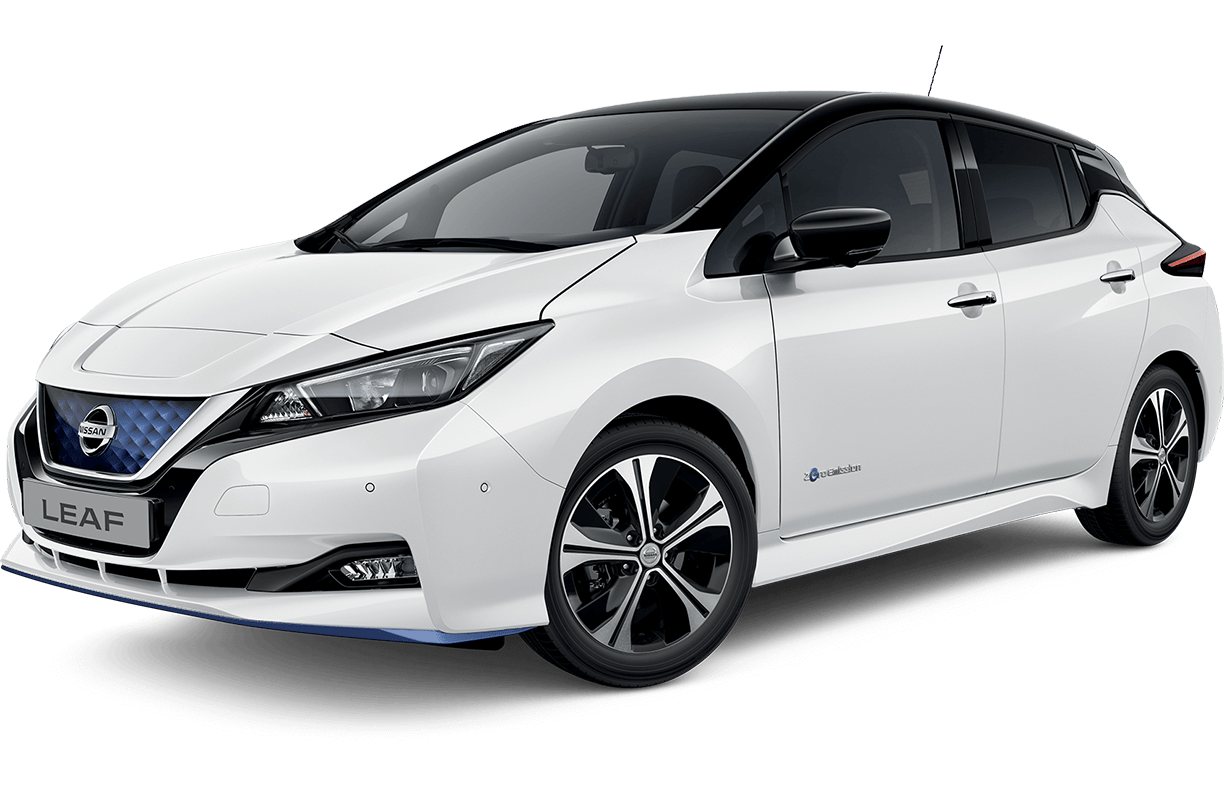
Should I buy a used EV?
You might want to consider a used EV. There are some bargains to be had, with quite a few older generation Nissan Leafs popping up on a regular basis. But when buying used, bear in mind that the Leaf and some other older EVs don’t have active battery thermal management and will most likely have suffered a drop-off in range over time, and some may be nearing the end of their battery’s lifespan. Check the vehicle’s range estimate with a full battery—if it is approaching 20% lower than the original range, then the battery is close to ‘end of life’ for EV use, although you could keep using it, just with that lower range. For an example of how to assess an EV’s battery condition, see ’Fit for purpose: Assessing your Leaf’s battery health’ in Renew 142.
What about importing an EV?
While it is possible to import an EV from overseas yourself, there are a number of restrictions and requirements before you can obtain an import permit, as well as modifications that need to be performed to have the car comply with Australian requirements. In many cases it simply won’t be possible to import a new model of EV that isn’t yet available here. There is a good overview of the issues involved at bit.ly/DZ_IAEV.
There is one importer in Queensland importing and selling overseas EVs—check the CarSales website for their listings.
EV conversions
Before the mass-market EVs like the Nissan Leaf became available, the only way to get an EV was to build your own by converting an ICE vehicle to electric. This involves a lot of research and design work, and a great deal of technical skill. Is it still a viable option? If you have a very specific vehicle you would like to be electric, such as a classic car or a special vehicle, then yes, it can be worth it. But for general transportation, then the time required is high and cost can in fact be greater than buying a used EV in good condition.
EVs available
The range of EVs available in Australia is slowly improving as more become available globally and manufacturers make the effort to release them here. Australia is a small market, so there hasn’t been a big push from the incumbent car makers to promote EVs here—in fact, we have heard of cases of dealers actively discouraging customers from buying EVs (this is not a problem unique to Australia; it has happened in the USA and Europe as well).
Improving EV technology
Recently, researchers have expressed concern that the shift to fully electric transport won’t be possible without considerable increase in the production of certain materials, such as lithium, cobalt, and rare earth elements. Their concerns, while valid, are based on current battery and motor technology and current rates of recycling and mining.
Virtually all EV battery manufacturers are working on reducing or eliminating expensive, uncommon materials from their batteries, especially cobalt. Indeed, manufacturers like Panasonic (who make batteries for Tesla and others) and LG Chem are aiming for cobalt-free batteries in the next few years.
Other advances, such as dry thin film processing for batteries which greatly reduces the amount of materials needed, reduced copper use in motors, improved recycling (a lot of these materials still go straight to landfill), and new sources of these elements coming online as extraction technology improves, will all but eliminate these resource supply issues.
We will be looking at this issue, and the emerging solutions, in a future issue of Renew.
Looking further down the track
While the list of road-going EVs is pretty small at present, there are a lot of EVs being developed or already available in other countries that may eventually make it to our shores. There is no way to know exactly which vehicles this will be, but given the huge range of ICE vehicles available here, we would expect to see almost every EV available overseas on sale here eventually.
Australian-made?
As mentioned earlier, Queensland company Ace EV is about to start producing their Cargo, Urban and Yewt models in Australia, and has recently signed an agreement with SA-based Aldom Motor Body Builders to build up to 15,000 vehicles a year by 2025. This is huge news for South Australia, which lost all of its car manufacturers in the last few years.
But even bigger news is that Chinese EV and battery giant BYD has signed a memorandum of understanding with Adelaide-based Evant to collaborate on the development and production of EVs in South Australia. Manufacturing will ramp up over time, with the eventual aim that vehicles will be fully manufactured in Adelaide. But before that happens, Chinese-made BYD vehicles will be shipped to Adelaide for conversion to Australian requirements. The deal will see three models of BYD EVs offered to the Australian market, including a seven-seat SUV, a mid-sized SUV and a family-sized sedan. No specifics are available at time of writing, but this deal has the potential to completely change the EV market in Australia.
So, it seems that the number of EV models available here is about to rapidly expand, and prices are likely to fall as Chinese companies force their way into the market.
What are the car manufacturers doing?
The big ICE manufacturers have, until recently, mostly been tinkering at the edges when it comes to EVs, but that is now changing, with some serious commitments to going electric from several manufacturers.
The largest car maker in the world, Volkswagen (which includes several car brands including VW and Audi), has committed to EVs, in part due to the ‘dieselgate’ fiasco. Volkswagen has been investing heavily in EVs (around US$48 billion so far) to secure sources of batteries and components, and is constructing two new EV assembly facilities in China, in Anting and Foshan. VW has developed a new EV platform called MEB (Modularer Elektrobaukasten or Modular Electric Building blocks), which can be used in a wide range of vehicles. The first of those will be the VW I.D. Hatchback—the I.D. insignia will be used on VW’s new range of EVs, including the hatchback, an SUV and the long-awaited Kombi van replacement. The VW MEB platform will also be used on a number of other brands including Audi, SEAT and Škoda.
Volvo (now Chinese-owned by Geely) has a separate brand for their performance vehicles named Polestar, and it’s this brand that will produce their initial electric vehicle offerings. The Polestar 1, a PHEV, is due for production this year, while the Polestar 2, a true BEV, is slated for 2020. Volvo has also stated that by 2025, half of its Volvo brand cars will be BEVs, with the other half being PHEVs, meaning total electrification of their brand by 2025.They have signed a deal with LG Chem and CATL to supply the vast numbers of battery cells to achieve this goal. When we will see these vehicles down under is unknown.
Of course, Nissan has had the Leaf for some years, but they have seen a drop-off in sales as vehicles become available with better range, better battery thermal management and better performance and handling. They have recently added a 62 kWh version of the Leaf to their range, but it is not available for preorder in Australia, only the 40 kWh model.
Renault also has a few EVs, including the Zoe and Kangoo ZE van, but the Kangoo is not available in a long-range version yet, although the Zoe has a 300+ km range. Hyundai of course has the excellent Kona compact EV with well over 400 km of range, as well as the Ioniq PHEV and BEV models.
BMW has the i3, which falls into the small car category, but it is limited by a smallish battery and a maximum range of 260 km—not ideal for long-distance travel unless you like making plenty of charging stops, although it now does support 50 kW DC fast charging.
An interesting development is that Ford has recently invested in EV startup Rivian (rivian.com) to the tune of US$500 m, a considerable investment. This seems to be a response to the demand for a long-range electric pickup truck (large utes, such as Ford F150 and similar). Amazon has also invested US$700 m in Rivian, so its future is looking pretty solid. General Motors in the USA has also stated that they will be producing an electric full-sized ute (pickup truck) by 2023.
Rivian is an interesting company and is filling a niche that no one else, including Tesla, has so far—pickups and large SUVs. If all goes well, they will be a popular vehicle, with their 800 kg payload capacity and 5 tonne towing capacity, quad motor drive system delivering 559 kW and an insane 14,000 Nm of torque, range of over 600 km and a 0–100 km/h performance of just three seconds—on par with Tesla’s Model X. We can see these vehicles being very popular in both the USA, where pickup trucks make up 18% of all light vehicle sales, and in Australia as well.
Most of the other incumbent ICE manufacturers are behind in the EV stakes, and we look forward to seeing whether they choose to get in on the action with compelling EVs in the next year or two.
Charging an EV, at home or away
Electric vehicles can charge at different rates, from as slow as 2.3 kW from a regular power point, to 100 kW or more from a DC fast charger. At home, you may choose to use a portable charging lead, which plugs into a regular 10 A mains socket (although a dedicated mains circuit is a good idea due to the sustained high current draw). This is known as Mode 2 (called Level 1 in the US) charging and will limit charging to 2.3 kW (10 A); the car may limit to a lower charging rate using this method as well.
Chances are you will install an EVSE unit in your garage or outside near the car parking space. This provides Mode 3 (Level 2 in the US) charging, up to 32 A (7.2 kW), depending on the rating of the circuit, the supply to the premises and the car’s own charging limit. If you are lucky enough to have a three-phase supply, charging up to 22 kW is possible at home. Some cars, such as older BEVs (or PHEVs because of their much smaller batteries), may have a lower maximum charge rate than newer vehicles.
EVSEs come with a range of functions. Some, like the Myenergi Zappi, have the ability to charge from your solar array, diverting only the excess generation to the EV (but they can also draw from the mains like a regular EVSE if you need the car charged on a cloudy day). You will need to decide on the charging rate you require (that is within the capabilities of your home’s electricity supply), the features you want, plus, of course, you will need to select the cable length and plug type suitable for your EV. Your EV supplier may bundle an EVSE with the car, but you don’t have to use it if it doesn’t have the features you need.
But if you can’t install an EVSE at home, such as when living somewhere with only street parking, a public charging station near you could provide the solution. If your car has, say, 300 km range and you travel 100 km per week, you may only need to charge once every week or so. Public charging stations are also useful for those with an EVSE at home who may need to charge away from home occasionally, or when making longer trips.
Some public charging stations may be Mode 3, limiting charge rate to a maximum of 22 kW (maybe less, depending on the car’s charger capacity and the grid connection’s rating), or you may even find Mode 4 (Level 3 in the US) DC fast chargers (typically on highways), which can give you a much faster charge, if your car supports it (not all BEVs and no PHEVs support DC charging). Even if your car allows DC fast charging it may be limited to, say, 50 kW, so that will be as fast as you can charge regardless of the charging station capacity.
Your local supermarket may have a charging station or three, where you can charge while you shop. If they don’t, you can approach them and see if they can install one. The same goes for your place of work or a public carpark.
There are many charging stations dotted around Australia and New Zealand, making longer trips doable in an EV. The easiest way to find them is using an app (or website) such as Open Charge Map (openchargemap.org) and Plugshare (plugshare.com), which also includes private EV chargers that owners have listed, so you may end up grabbing some charge while parked in someone’s driveway!
There’s also a complete map of charge stations on the excellent My Electric Car website: myelectriccar.com.au/charge-stations-in-australia.
The charging network is growing by the day, with support from both private businesses and state governments. For example, the Queensland government has installed their Electric Super Highway, a network of DC fast chargers installed near highways that span from Coolangatta, south of Brisbane, up to Cairns. In WA, the RAC Electric Highway covers Perth to Augusta, and the Tesla Supercharger network spans from Adelaide to Brisbane via Melbourne, Canberra and Sydney (but these can only be used by Tesla vehicles).
Some charging may be free, but often isn’t, so you will need to have the appropriate app (or RFID card) and be registered to use a particular charging network. There are currently four main charging networks in Australia and New Zealand: Chargefox (chargefox.com), ChargePoint (chargepoint.com) and ChargeStar (chargestar.com.au), plus ChargeNet in NZ (charge.net.nz). Some charge stations are not networked. In this case, you simply pay the owner when charging. A typical example may be that you have access to a three-phase socket or an EVSE and you pay, say, $1.20 per hour for the time you use or a flat rate per kilowatt-hour. Even networked stations vary in pricing—ChargePoint, for example, states that charge station owners set their own fee structure, so pricing can be quite variable.
- Australian Electric Vehicle Association has an informative regular newsletter and fact sheets about EVs available on their website (written by our regular EV writer Bryce Gaton): aeva.asn.au
- My Electric Car: myelectriccar.com.au
- EV Compare: evcompare.io
- EV Specifications: evspecifications.com
- Green vehicle guide: greenvehicleguide.gov.au
- EV album: evalbum.com
- Fully Charged YouTube channel: youtube.com/user/fullychargedshow
Further reading
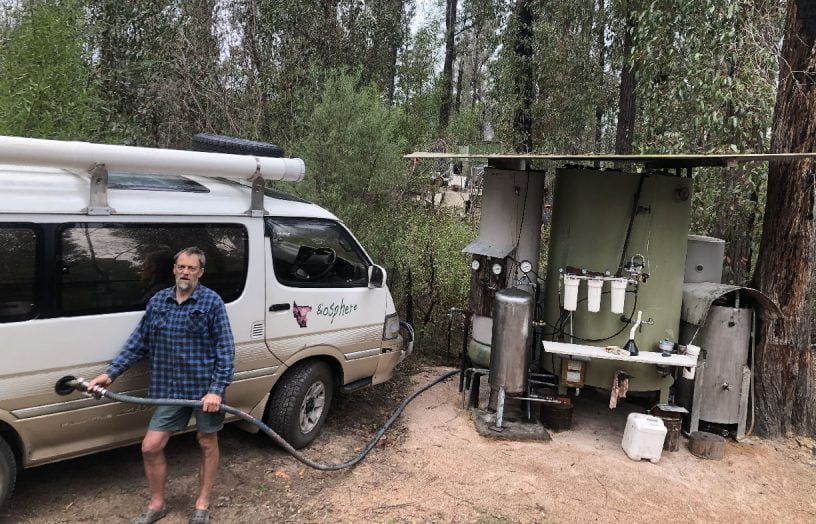 Transport & travel
Transport & travel
Biofuel vs battery
John Hermans gives his opinion on the best power source for electric vehicles.
Read more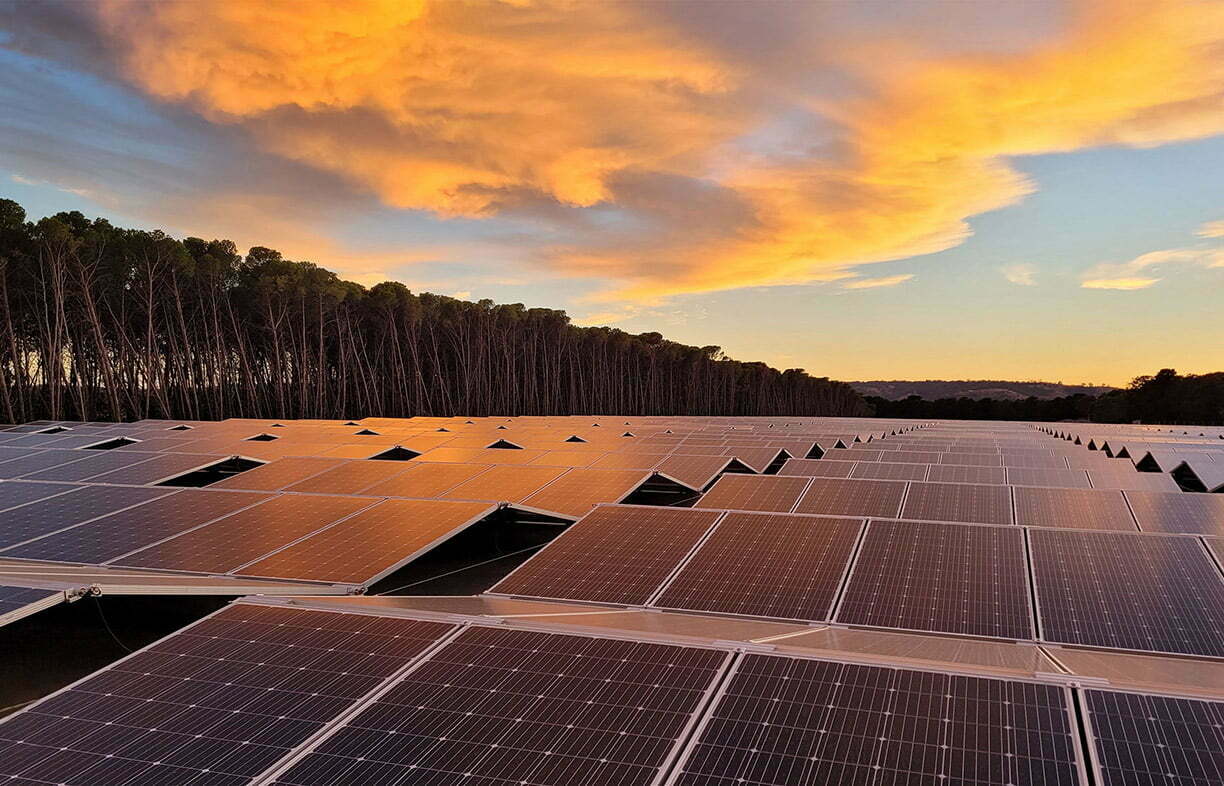 Electric vehicles
Electric vehicles
5B or not 5B
Large scale commercial solar farms can be time consuming to install and commission. Lance Turner looks at a company that has solved those issues.
Read more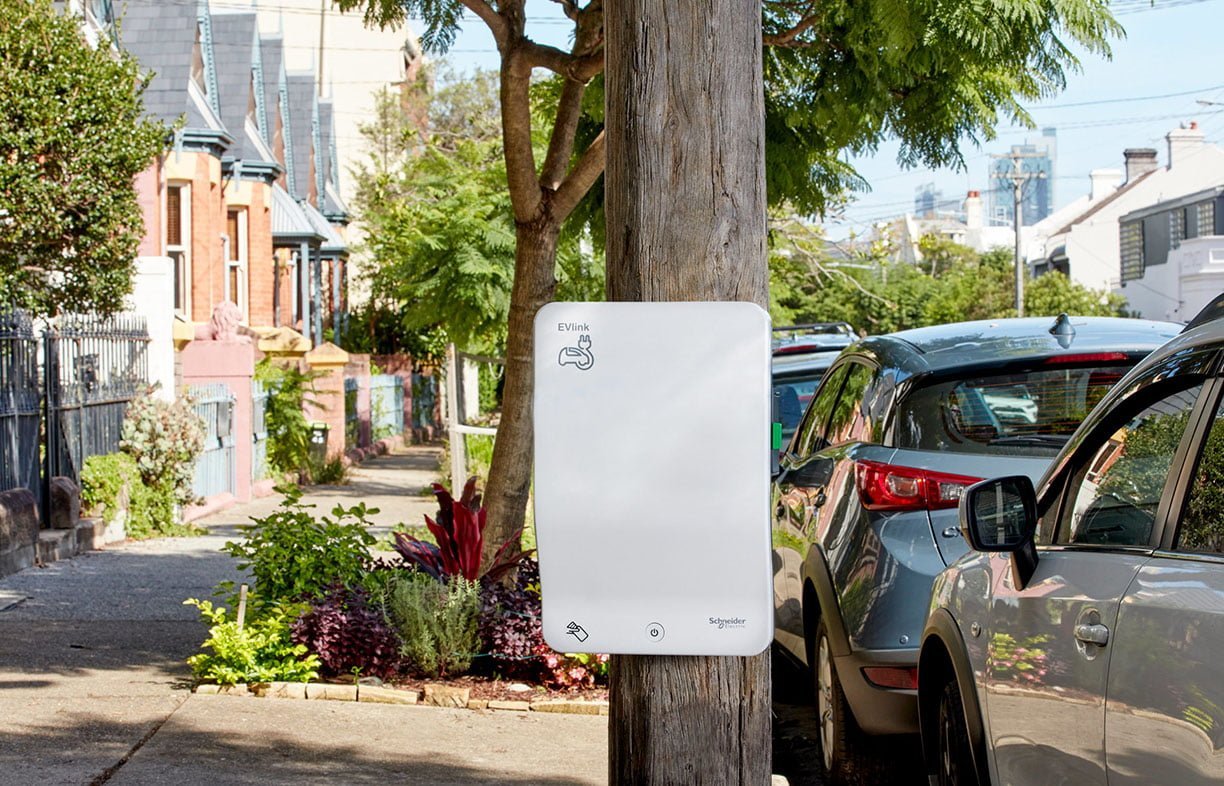 Electric vehicles
Electric vehicles
EV street charging trial
Rechargeable lithium batteries are critical for our modern world, but they do have a somewhat variable safety history. Lance Turner looks at the issues and what to do about them.
Read more

